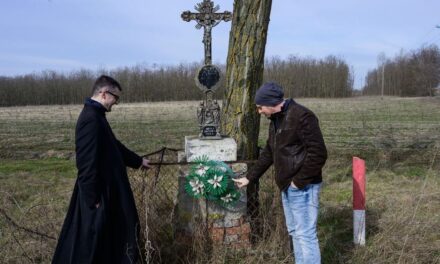According to the plans, the renovation of one of the most beautiful buildings of French classicism in Hungary, the Cathedral of Our Lady in Vác, will be completed next year. The Hungarian government is providing a total of four billion forints for the restoration of the church and, in parallel, the reconstruction of the faith life center in Galamb Street.
Major renovation works at the Cathedral of Our Lady in Vác took place during the Second World War.
The last time conservation works were carried out during the time of Bishop Ferenc Keszthely, in the last decade of the 20th century. Since then, the state of the cathedral has deteriorated, its mechanical and electrical systems are outdated. The purpose of the ongoing renovation is twofold: in addition to preserving the structure, making it even more usable for the faithful in accordance with the requirements of the 21st century, and also preparing for touristic utilization. The goal is for the church, which celebrates the 250th anniversary of the consecration of the cathedral this year, to regain its former beauty. The Hungarian government provides a total of four billion forints for the renovation of the cathedral and the parallel reconstruction of the faith center in Galamb street.
The works have already begun, but due to the extremely complex processes, the cathedral will definitely remain closed until the fall of 2023. The handover of the faith life center in Galamb Street is scheduled to take place by December 31, 2022. In the first phase of the painting restoration work - which is taking place this year - the goal was to restore the original decorative or architectural wall painting.
During the work, with the consent of the Heritage Protection Office, the restorers will wash off the wall painting from 1944 and restore the original decorative wall painting with rosettes from the 18th century. As part of the works, the ceiling fresco by Franz Anton Maulbertsch and the fresco in the sanctuary will be restored. In the framework of the latter, the image of Béla Kontuly will be covered up and the original decorative architecture will be restored. The restoration works are carried out by Synthese Kft. under the supervision of the lead restorer Lajos Velledits. In the second stage of the restoration, according to the plans (expected to be next year), the roof and shell will be revised and repaired, the facade including the windows and doors will be renewed, the drainage will be solved, the mechanical and electrical systems in the interior of the church will be replaced, the interior lighting will be renewed, and a tourist reception area, washrooms and the building will be made barrier-free.
There are also plans to renovate the interior of the church to better align with II. For the requirements of the Vatican Council and for serving today's liturgical events. In the course of these works, the canonical chapel would be transformed into a sacramental chapel, and a new, immovable high altar would be built to replace the current wooden altar. The first cathedral of Vác was built by King Géza I in honor of the Virgin Mary on the former castle hill in Vác as a fulfillment of his vow before the victorious Battle of Mogyoród (1074).
During the reorganization of the bishopric in the 18th century, Bishop Károly Eszterházy sought a worthy setting for the cathedral of one of the largest dioceses in the country at the time, which he wanted to build according to the late Baroque taste of his time. The foundation stone was laid on May 24, 1762. The church owes its final shape to Bishop Kristóf Migazzi, who, after his appointment, due to economic considerations, commissioned a new plan with the French-born Isidore Canevalé, completely transformed the facade, and thus made the Vác Cathedral a unique representative of French classicism in Hungary at the time. The completed new church building was consecrated on August 15, 1772 in honor of Our Lady and Saint Michael.
At that time, the cathedral was one of the largest cathedrals in the country. In terms of its dimensions, it still occupies a prominent place among Hungarian Catholic churches: its external length is 72 meters, its width is 34 meters, and the dome is 55 meters high. The frescoes of the main altar and the dome were created by the most important Austrian painter of the time, Franz Anton Maulbertsch. The high altar picture is also an authentic work of Maulbertsch, made in 1770-1771. For reasons that are not entirely known, it was covered with another work two years after its completion, and it was not visible again until 170 years later. When the church was built, a uniform decorative, so-called architectural painting was made, which was replaced in 1944, with a purpose that is still unclear, with monochromatic wall painting.
Written by: Magyar Hírlap.hu, Tamás Velkei
Photo: the author













